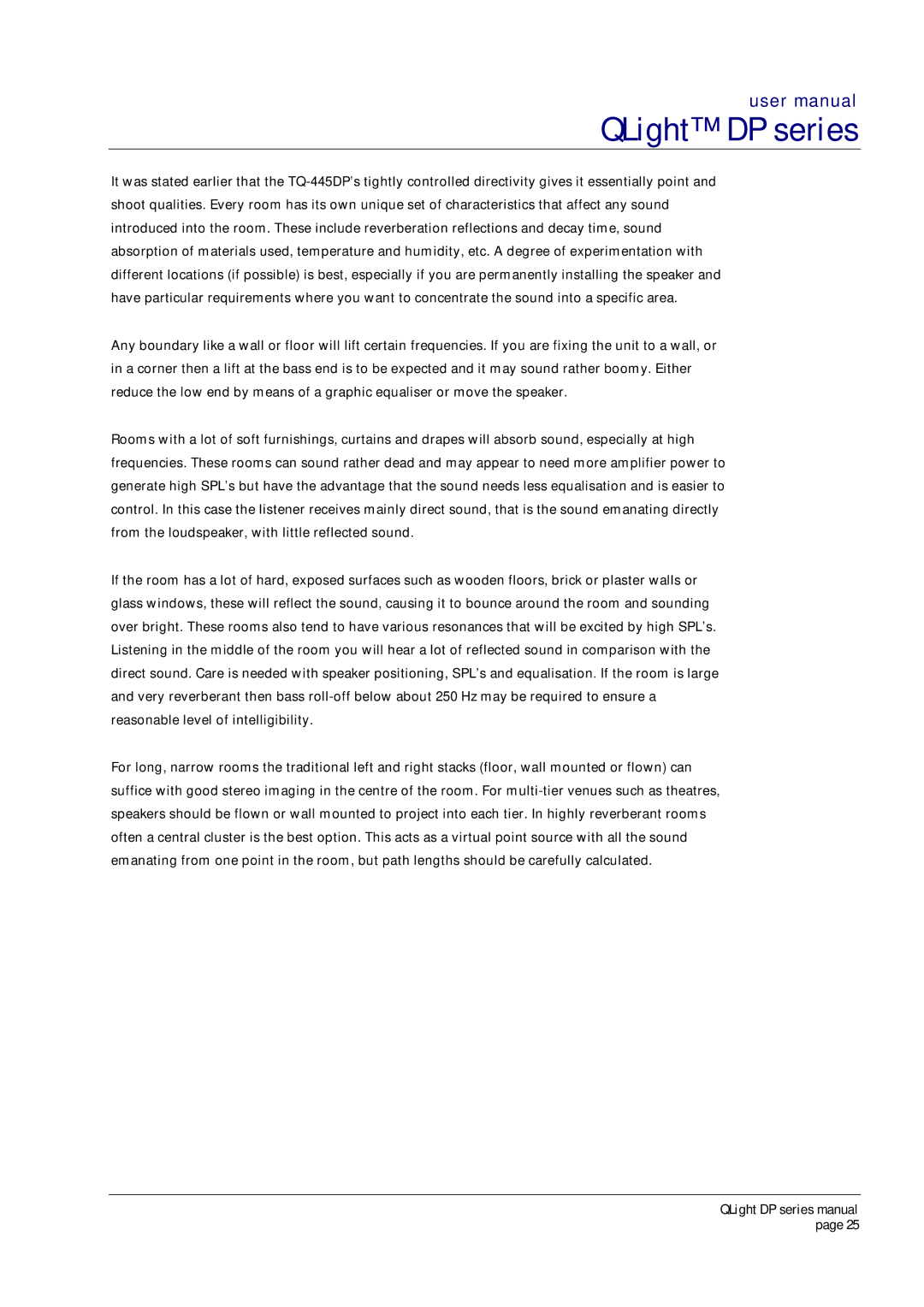
user manual
QLight™ DP series
It was stated earlier that the
Any boundary like a wall or floor will lift certain frequencies. If you are fixing the unit to a wall, or in a corner then a lift at the bass end is to be expected and it may sound rather boomy. Either reduce the low end by means of a graphic equaliser or move the speaker.
Rooms with a lot of soft furnishings, curtains and drapes will absorb sound, especially at high frequencies. These rooms can sound rather dead and may appear to need more amplifier power to generate high SPL’s but have the advantage that the sound needs less equalisation and is easier to control. In this case the listener receives mainly direct sound, that is the sound emanating directly from the loudspeaker, with little reflected sound.
If the room has a lot of hard, exposed surfaces such as wooden floors, brick or plaster walls or glass windows, these will reflect the sound, causing it to bounce around the room and sounding over bright. These rooms also tend to have various resonances that will be excited by high SPL’s. Listening in the middle of the room you will hear a lot of reflected sound in comparison with the direct sound. Care is needed with speaker positioning, SPL’s and equalisation. If the room is large and very reverberant then bass
For long, narrow rooms the traditional left and right stacks (floor, wall mounted or flown) can suffice with good stereo imaging in the centre of the room. For
QLight DP series manual page 25
